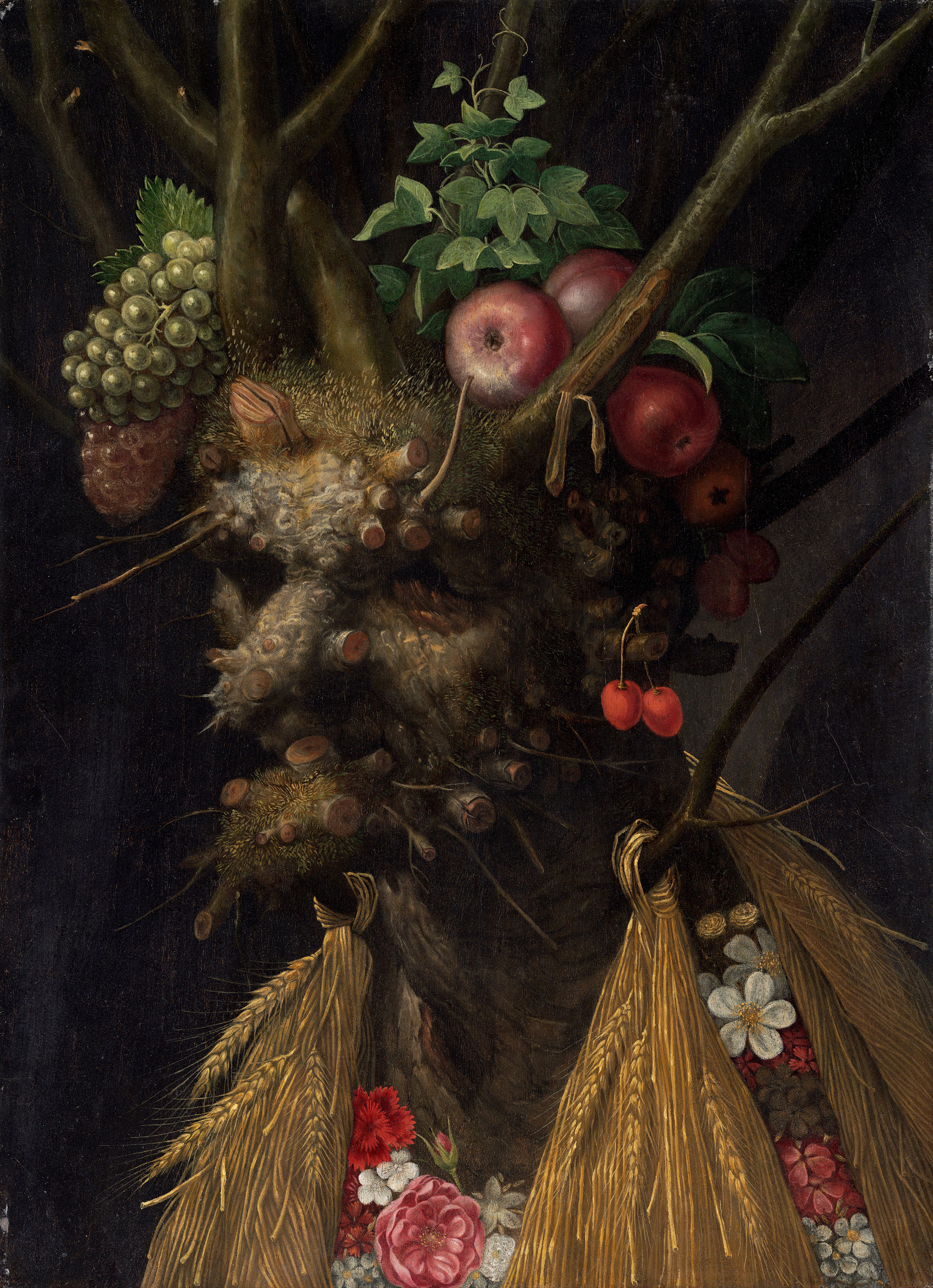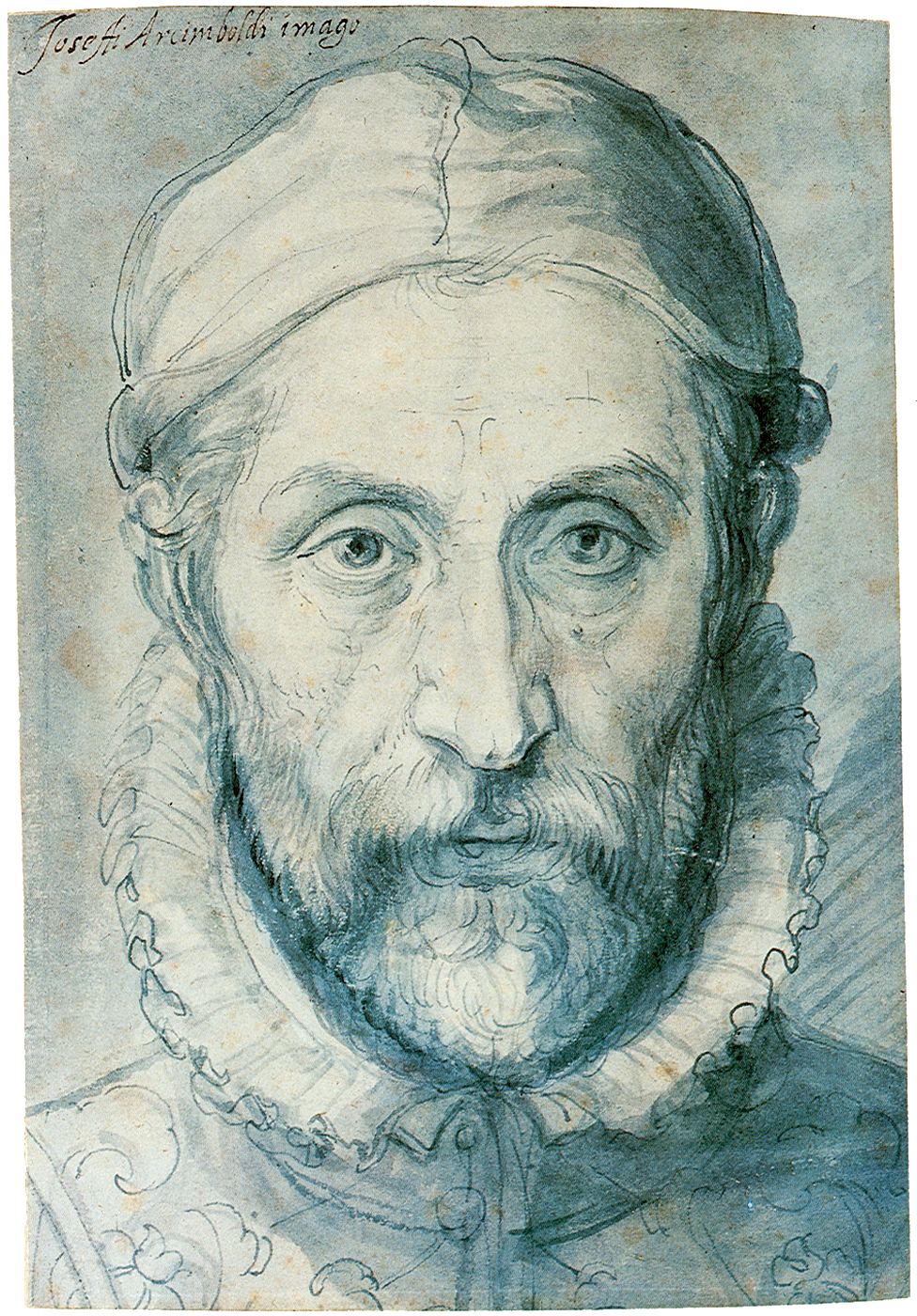The late Renaissance master Giuseppe Arcimboldo is famous for his bizarre composite heads. Painted singly or in series, the heads combine plants, animals, and other objects appropriate to the themes Arcimboldo treated, such as the Four Seasons and the Four Elements (earth, air, fire, and water).
The panel is signed "ARCIMBOLDUS F," where the bark has peeled away on the branch at the right. It is also the subject of a lengthy description in a literary dialogue titled Il Figino, written by Arcimboldo's friend Gregorio Comanini and published in 1591. Here the Milanese artist Ambrogio Figino is advised to have "Comanini show you Arcimboldo's playful treatment of the Four Seasons; you will see a lovely work." After accurately describing the painting, Figino is assured that "the work will please you wonderfully."
By contrast to the whimsical character of much of Arcimboldo's work, the mood here is darker and more somber. The Four Seasons in One Head is also the most closely related of all Arcimboldo's composite heads to the physiognomic studies of Leonardo da Vinci, Arcimboldo's predecessor in Milan. Painted around 1590, after Arcimboldo had returned to his native city, this Four Seasons is one of his last works. If not a self-portrait of the artist in the winter of his life, the painting is a summa of his career.


 Giuseppe Arcimboldo
Giuseppe Arcimboldo